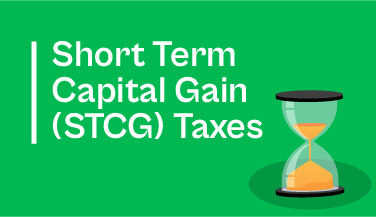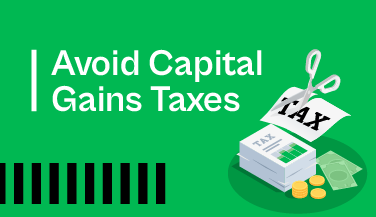If you are a mutual fund investor or someone planning to invest, staying aware of how your returns from mutual funds will be taxed is essential. Profits or gains from mutual funds are taxable, just like most of the other asset classes you invest in. As taxes are difficult to avoid, it will be good to know about the tax on mutual fund rules before you start investing. Apart from this, understanding mutual funds taxation can help you plan your investments to minimize your overall tax outgo; this article will walk you through all elements of mutual funds taxation.
1. Key Factors That Determine the Taxation of Mutual Funds in India
Breaking down the concepts of mutual fund taxation further into smaller bits makes it far easier to understand. So, let’s take our first step by looking at the three factors that influence the mutual fund tax liability.
The type of funds: For taxation, mutual funds are classified into two categories: equity and debt-oriented mutual funds.
The type of gains generated (capital gains or dividend): Capital gains are the gains you generate when you sell a capital asset for a higher price than its cost, while a dividend is a part of profits accumulated that the mutual fund house distributes to the investors of the scheme (i.e., dividends don’t require an investor to sell the asset). A discussion on what these are and how each of these is taxed follows in a subsequent section.
Your holding period: The holding period dictates the rate of tax you’ll pay on your capital gains. The greater your holding period, the less tax you’ll pay. India’s income tax regulations encourage a longer holding period, which is why holding your investment for longer reduces your tax liability.
2. How Are Profits Generated in Mutual Funds?
Investors earn profit from mutual funds either through capital gains or dividend income. Let’s get some clarity on what they are and how they differ.
Capital gain is the profit generated from selling an asset at a higher value than its cost. For instance, if you hold units of a mutual fund scheme that you purchased when the NAV was ₹140, you will generate a capital gain when the price moves above ₹140, and you sell the units.
However, an important thing to note is that capital gains are only realized when the mutual fund units are redeemed. Hence, it’s only at the time of redemption that the mutual fund capital gains tax accrues. The tax on mutual fund redemption, therefore, will need to be paid when the income tax returns are filed in the coming financial year.
Dividends are another way that mutual fund investors can earn income from a fund. The mutual fund declares dividends based on the distributable surplus it has accumulated. Dividends are distributed at the fund’s discretion and become taxable as soon as they’re paid out to the investors. Investors pay tax on dividends when they receive the dividend from their mutual funds. The old and new mutual fund dividend tax rules have been discussed in the following section.
3. Taxation on Dividends
The Finance Act, 2020 introduced an amendment withdrawing Dividend Distribution Tax. Dividend income from mutual funds was tax-free for investors before March 31, 2020. The fund houses that declared dividends deducted a Dividend Distribution Tax (DDT) before paying it to the mutual fund investors. Now, the entire dividend income is taxable in the hands of the investor as per the income tax slab under the head “income from other sources.”
TDS (tax deducted at source) is also applicable to the dividend distributed by the mutual fund scheme. As per the changed rules now, when the mutual fund distributes the dividend to its investors, the AMC must deduct 10% TDS u/s 194K if the total dividend paid to an investor exceeds ₹5,000 during a financial year. When you pay your taxes, you can claim the 10% TDS that has already been deducted by the AMC and only pay the balance.
4. Taxation on Capital Gain
The tax on mutual funds capital gains depends on the types of mutual fund scheme you are invested in and how long have you held the units of the scheme for. Based on the Let us understand the two factors in detail.
First, let’s talk about the terms long-term capital gains (LTCG) and short-term capital gains (STCG) and what they mean. LTCG is the capital gain generated from an asset that an investor holds for a long duration (i.e., a long holding period), while STCG is the capital gain generated on assets held for a relatively shorter duration.
The terms long and short duration differ for equity and debt schemes for tax purposes. For instance, for capital gain on mutual funds to be treated as long term, your holding period must be at least 12 months for equity-oriented schemes, but 36 months for debt-oriented schemes. The following table gives an overview of the holding periods required for capital gains to be treated as long term and short term.
| Fund Type | STCG Holding Period | LTCG Holding Period |
|---|---|---|
| Equity Funds | Less than 12 months | More than 12 months |
| Debt Funds | Less than 36 months | More than 36 months |
| Hybrid Funds | Less than 12 months | More than 12 months |
5. Scheme Orientation
Once you know your holding period, the tax on the capital gains will be determined by the type of mutual fund you are invested in. There are primarily two categories of mutual funds: equity and debt. However, it’s also important to talk about hybrid funds to understand how they’re taxed. Let’s talk about the taxability of mutual funds for each category in detail.
Taxation on Equity
Any mutual fund scheme that invests at least 65% of its corpus to Indian equities or equity-related instruments is classified as an equity-oriented scheme for tax purposes. All other funds are treated as debt-oriented schemes for taxation purposes.
Long Term Capital Gains on Mutual Fund: Equity Schemes
LTCG on sale of equity shares or equity-oriented mutual fund schemes was exempt u/s 10(38), but this changed in the year 2018. As of today, LTCG income tax on mutual funds (equity-oriented schemes) is charged at the rate of 10% on capital gains in excess of ₹1 lakh as per section 112A of the Income Tax Act, 1961.
For instance, if you generated ₹1,20,000 LTCG from an equity-oriented scheme in a financial year, your tax will be calculated on ₹20,000 at 10% (plus cess and surcharge as applicable), regardless of your income tax slab.
Short Term Capital Gains on Mutual Fund: Equity Schemes
STCG tax on the sale of units of equity-oriented mutual fund schemes is charged at 15% as per section 111A of the Income Tax Act, 1961. For instance, if you generated ₹1,30,000 STCG from an equity-oriented scheme in a financial year, your tax will be calculated on ₹1,30,000 at 15% (plus cess and surcharge as applicable), regardless of your income tax slab. This is because the 1 Lakh exemption, as in case of LTCG tax, is not applicable for STCG tax.
Equity-Linked Savings Scheme (ELSS)
ELSS are mutual funds schemes that invest at least 80% of their net assets in equities. If you’re looking for mutual fund tax benefits, this is the scheme you want. Money invested in an ELSS is deductible up to ₹1.5 lakh u/s 80C of the Income Tax Act, 1961. Notice that section 80C itself has a cap of ₹1.5 lakh. If you’re already claiming deductions for other items covered u/s 80C such as LIC premium, the amount deductible for your contributions to ELSS will reduce accordingly.
ELSS comes with a three-year lock-in period. Once you invest in an ELSS, you’ll always end up paying LTCG tax and not STCG tax. The money you invest in ELSS cannot be withdrawn before three years, though you can get a loan against it. If you need a more visual explanation of how ELSS works, take a look at the following video:
A Guide on How to Invest in Best ELSS Funds | Equity Linked Saving Scheme – (ELSS) | ET Money – YouTube
Taxation on Debt
Taxation for debt-oriented is a little simpler, and they offer better tax efficiency than traditional investments like fixed deposits. Let’s talk about the LTCG tax and STCG tax on debt mutual funds separately.
Long Term Capital Gains on Mutual Fund: Debt Schemes
As per section 112 of the Income Tax Act, 1961, LTCG tax on debt-oriented schemes is charged at 20% with indexation benefits. Indexation benefits make debt mutual funds schemes tax efficient. It adjusts the purchase cost for the price rise (inflation), measured by Cost Inflation Index (CII, as provided by tax departments).
Indexation is a major mutual fund tax benefit because it reduces your capital gains (and therefore the tax liability) by increasing your cost of acquisition (i.e., purchase cost). For instance, say you purchased mutual fund units worth ₹1 lakh during FY 2018–19 and sold them during FY 2021–22 for ₹1,75,000. Your capital gains, though ₹75,000, will be reduced because the purchase cost will be adjusted for inflation. You can adjust for inflation using the CII with simple unitary method. Just think of it like this: You invested ₹100 three years ago when the CII was 110. Now, 3 years later, the CII is 120. Therefore, your cost of acquisition will be:
(₹100 x 120) ÷ 110 = ₹109.1
Below is the textbook formula for calculating the indexed purchase cost:
Indexed Cost of Acquisition = [CII for the year of sale ÷ CII for the year of purchase (or CII for 2001–02, whichever is earliest)] x cost of acquisition
Therefore, in our example, the cost of acquisition would be:
₹1,13,214 = [317 ÷ 280] x ₹1 lakh
Consequently, taxable LTCG will be:
₹1,75,000 – ₹1,13,214 = ₹61,786
So, your LTCG tax will now be calculated on Rs 61,786 rather than Rs 75,000, and hence, will be lower.
Short Term Capital Gains on Mutual Fund: Debt Schemes
STCG on debt mutual funds is charged as per the assessee’s tax slab. For instance, if your current income excluding the STCG is already more than ₹10,00,000 and you are in the highest tax bracket of 30%, your short-term capital gains tax rate will be 30% (plus cess and surcharge as applicable).
Taxation on Hybrid
Mutual fund taxation of a hybrid fund depends on whether it’s an equity-focused or debt-focused hybrid fund. A hybrid fund that has equity exposure in excess of 65% is an equity-focused scheme, and all other hybrid funds are debt-focused. The same tax laws that apply to equity or debt funds also apply to hybrid funds depending on their equity exposure.
If the hybrid fund is equity-focused: LTCG is charged at 10% on capital gains exceeding ₹1 lakh (without indexation), and STCG is charged at 15%.
If the hybrid fund is debt-focused: LTCG is charged at 20% with indexation benefits, and STCG is charged as per the investor’s tax slab.
Now that we know how the capital gains tax is calculated for different types of mutual funds depending on your holding period, let’s see how you can declare your mutual fund income.
6. How to Declare Mutual Fund Investments in ITR
When you redeem your mutual fund investments, you’ll need to disclose the details in the subsequent ITR filing. You’ll need to include all the details, including the purchase date and date of sale, among other things.
However, if you’ve invested through ET Money, you can generate a Capital Gains Statement that automates these computations. The statement segregates your short- and long-term capital gains automatically so you don’t have to compute them manually. Investors also find it difficult to compute tax on mutual funds investments purchased before January 31, 2018, when FM Arun Jaitley introduced the grandfathering clause. ET Money takes care of these calculations as well, so you don’t have to spend hours learning tax laws online.
When declaring mutual fund investments in ITR, you’ll need to select either ITR-2 (if you’re a salaried individual with capital gains) or ITR-3 (if you also have income from business and profession). While adding capital gains details, you can either use the ET Money statement and input the data about the date and amount of purchase and sale, transfer expenses, and a few other details.
7. Final Thoughts
The taxability of mutual funds isn’t as complicated as one might think. Mutual funds taxation essentially boils down to the holding period and whether the scheme is equity or debt-oriented. What may be overwhelming is having to compute everything manually when the return filing date is a week away. This is why ET Money’s Capital Gain Statement could be a valuable asset.




